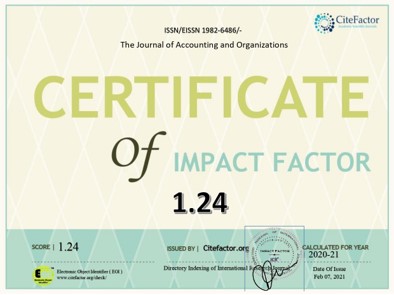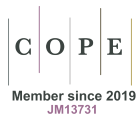Corrupção, lavagem de dinheiro e conluio no Brasil: evidências empíricas dos vínculos entre fraudadores e cofraudadores no caso Lava Jato
DOI:
https://doi.org/10.11606/issn.1982-6486.rco.2019.158510Palavras-chave:
Corrupção, Lavagem de dinheiro, Cofraudador, Lava JatoResumo
Este estudo exploratório objetiva compreender os vínculos que conectam cofraudadores em esquemas de corrupção e lavagem de dinheiro presentes na Operação “Lava Jato”. A base de dados foi construída por meio da leitura das denúncias realizadas e documentadas pelo Ministério Público Federal (MPF). Foram identificadas todas as pessoas acusadas pelo MPF e suas características (gênero, idade e experiência anterior ao crime), assim como a natureza dos vínculos entre fraudadores e cofraudadores, o tipo de crime e o papel do acusado no crime. Sinteticamente, os resultados demonstraram que os fraudadores líderes já haviam sido condenados anteriormente e/ou possuíam experiência nas fraudes cometidas. Os resultados demonstraram ainda que os vínculos afetivos estão positivamente relacionados à apropriação indébita, ocultação de provas e “testa de ferro”. Se por um lado, Fee e Murphy (2015) destacaram a natureza dos vínculos entre membros de grupos fraudulentos, nossos achados evoluem e fornecem algumas evidências empíricas dos vínculos funcionais que servem à organização e invariavelmente para os vínculos afetivos.
Downloads
Referências
em: 15 maio 2019.
Alvarez, J. P. (2015). Low-Level Corruption Tolerance: An “Action-Based” Approach for Peru and Latin America.
Journal of Politics in Latin America, 7(2), 99-129. DOI: https://doi.org/10.1177/1866802X1500700204.
Ashforth, B. E., & Anand, V. (2003). The normalization of corruption in organizations. Research in organizational
behavior, 25, 1-52. DOI: https://doi.org/10.1016/S0191-3085(03)25001-2.
Bishop, C. C., Hermanson, D. R., & Riley Jr, R. A. (2017). Collusive fraud: Leader, incident, and organizational
characteristics. Journal of Forensic Accounting Research, 2(1), 49-70. DOI: https://doi.org/10.2308/jfar-
51826.
Bonny, P., Goode, S., & Lacey, D. (2015). Revisiting employee fraud: gender, investigation outcomes and offender
motivation. Journal of Financial Crime, 22(4), 447-467. DOI: https://doi.org/10.1108/JFC-04-2014-0018.
Button, M., Shepherd, D., & Blackbourn, D. (2018). Co-offending and bribery: the recruitment of participants to
corrupt schemes and the implications for prevention. Security Journal, 31, 882-900.
Chaikin, D. (2008). Commercial corruption and money laundering: a preliminary analysis. Journal of Financial
Crime, 15(3), 269-281. DOI: https://doi.org/10.1108/13590790810882865.
Cox, D. (2014). Handbook of anti-money laundering. John Wiley & Sons.
Dimant, E., & Tosato, G. (2018). Causes and effects of corruption: what has past decade's empirical research taught us? A survey. Journal of Economic Surveys, 32(2), 335-356. DOI: https://doi.org/10.1111/joes.12198.
Dollar, D., Fisman, R., & Gatti, R. (2001). Are women really the “fairer” sex? Corruption and women in
government. Journal of Economic Behavior & Organization, 46(4), 423-429. DOI: https://doi.org/10.1016/
S0167-2681(01)00169-X.
Fávero, L.P., & Belfiore, P. (2017). Manual de Análise de Dados: Estatística e Modelagem Multivariada com
excel, SPSS e Stata. Elsevier, Rio de Janeiro.
Free, C. (2015). Looking through the fraud triangle: A review and call for new directions. Meditari Accountancy
Research, 23(2), 175-196. DOI: https://doi.org/10.1108/MEDAR-02-2015-0009.
Free, C., & Murphy, P. R. (2015). The ties that bind: The decision to co‐offend in fraud. Contemporary Accounting
Research, 32(1), 18-54. DOI: https://doi.org/10.1111/1911-3846.12063.
Gonçalves, V. B., & Andrade, D. M. (2019). A corrupção na perspectiva durkheimiana: um estudo de caso da
Operação Lava Jato. Revista de Administração Pública. (53)2, 271-290. DOI: http://dx.doi.org/10.1590/0034-
761220180192.
Jancsics, D. (2019). Corruption as resource transfer: An interdisciplinary synthesis. Public Administration Review.
(79)4, 523-537. DOI: https://doi.org/10.1111/puar.13024.
Kleemans, E. R., & De Poot, C. J. (2008). Criminal careers in organized crime and social opportunity structure.
European Journal of Criminology, 5(1), 69-98.
Kominis, G., & Dudau, A. (2018). Collective corruption–How to live with it: Towards a projection theory of
post-crisis corruption perpetuation. European Management Journal, 36(2), 235-242. DOI: https://doi.
org/10.1016/j.emj.2017.12.001.
Lantz, B., & Hutchison, R. (2015). Co-offender ties and the criminal career: The relationship between co-offender
group structure and the individual offender. Journal of Research in Crime and Delinquency, 52(5), 658-690.
DOI: https://doi.org/10.1177/0022427815576754.
Levi, M., & Reuter, P. (2006). Money laundering. Crime and Justice, 34(1), 289-375. DOI: https://doi.
org/10.1086/501508.
Maragno L. M. D., & Borba, J. A. (2019). Unearthing money laundering at Brazilian Oil Giant Petrobras. Journal
of Money Laundering Control. 22(2). DOI: https://doi.org/10.1108/JMLC-03-2018-0027.
Maragno, L. M. D., & Borba, J. A. (2017). Mapa conceitual da fraude: configuração teórica e empírica dos estudos
internacionais e oportunidades de pesquisas futuras. Revista de Educação e Pesquisa em Contabilidade, 11,
41-68. DOI: https://doi.org/10.17524/repec.v11i0.1665.
Mclannahan, B. (2017). Fiscalização em bancos globais afeta emergentes. Valor Econômico. São Paulo. Disponível
em: <https://www.valor.com.br/financas/5113464/fiscalizacao-em-bancos-globais-afeta-emergentes>.
Acesso em: 15 maio 2019.
Mcgloin, J. M., & Nguyen, H. (2012). It was my idea: Considering the instigation of co‐offending. Criminology,
50(2), 463-494. DOI: https://doi.org/10.1111/j.1745-9125.2011.00266.x.
Milne, R. (2019). Prosecutors charge ex-Danske Bank chief in money-laundering probe: Thomas Borgen is first
senior manager to be indicted in €200bn scandal. Financial Times. Londres, 07 maio 2019. Disponível em:
<https://www.ft.com/content/a78b04ba-70d5-11e9-bf5c-6eeb837566c5>. Acesso em: 13 maio 2019.
OCDE. (2018). Money laundering. Disponível em: < https://www.oecd.org/cleangovbiz/toolkit/moneylaundering.
htm> Acesso em: 13 maio 2019.
Pinto, J., Leana, C. R., & Pil, F. K. (2008). Corrupt organizations or organizations of corrupt individuals? Two
types of organization-level corruption. Academy of Management Review, 33(3), 685-709. DOI: https://doi.
org/10.5465/amr.2008.32465726.
Reuters (2016). IMF: Global corruption costs trillions in bribes, lost growth. Disponível em: <https://
www.reuters.com/article/us-imf-corruption/imf-global-corruption-costs-trillions-in-bribes-lost-growthidUSKCN0Y22B7>. Acesso em: Acesso em: 15 maio 2019.
Schwartzkopff, F., & Magnusson, N. (2019). Swedbank Hunts for CEO as Dirty Money Investigations Continue.
Bloomberg. Nova York. Disponível em: <https://www.bloomberg.com/news/articles/2019-05-13/swedbankhunts-
for-ceo-as-dirty-money-investigations-continue>. Acesso em: 15 maio 2019.
Tillyer, M. S., & Tillyer, R. (2015). Maybe I should do this alone: A comparison of solo and co-offending robbery
outcomes. Justice Quarterly, 32(6), 1064-1088. DOI: https://doi.org/10.1080/07418825.2014.883422.
Trompeter, G. M., Carpenter, T. D., Jones, K. L., & Riley Jr, R. A. (2014). Insights for research and practice:
What we learn about fraud from other disciplines. Accounting Horizons, 28(4), 769-804. DOI: https://doi.
org/10.2308/acch-50816.
UNODC. (2019). Money-Laundering and Globalization. Disponível em: <https://www.unodc.org/unodc/en/
money-laundering/globalization.html>. Acesso em: 10 abril 2019
Van Mastrigt, S. B., & Farrington, D. P. (2011). Prevalence and characteristics of co‐offending recruiters. Justice
Quarterly, 28(2), 325-359. DOI: https://doi.org/10.1080/07418825.2010.482535.
Weerman, F. M. (2003). Co-offending as a social exchange: Explaining characteristics of co-offending. British
Journal of Criminology, 43, 398-416. DOI: https://doi.org/10.1093/bjc/43.2.398.
Downloads
Publicado
Edição
Seção
Licença
A RCO adota a política de Acesso Livre (Libre Open Access), sob o acordo padrão Creative Commons (CC BY-NC-ND 4.0). O acordo prevê que:
- A submissão de texto autoriza sua publicação e implica compromisso de que o mesmo material não esteja sendo submetido a outro periódico. O original é considerado definitivo;
- Autores mantêm os direitos autorais e concedem à revista o direito de primeira publicação, com o trabalho simultaneamente licenciado sob a Licença Creative Commons Attributionque permite o compartilhamento do trabalho com reconhecimento da autoria e publicação inicial nesta revista;
- Autores têm autorização para assumir contratos adicionais separadamente, para distribuição não-exclusiva da versão do trabalho publicada nesta revista (ex.: publicar em repositório institucional ou como capítulo de livro), com necessário reconhecimento de autoria e publicação inicial nesta revista;
- Autores têm permissão e são estimulados a publicar e distribuir seu trabalho online (ex.: em repositórios institucionais ou na sua página pessoal) antes ou durante o processo editorial, já que isso pode gerar alterações produtivas, bem como aumentar o impacto e a citação do trabalho publicado (Veja O Efeito do Acesso Livre);
- A revista não paga direitos autorais aos autores dos textos publicados;
- O detentor dos direitos autorais da revista, exceto os já acordados no acordo de Libre Open Access (CC BY-NC-ND 4.0), é o Departamento de Contabilidade da Faculdade de Economia, Administração e Contabilidade de Ribeirão Preto da Universidade de São Paulo.
Não são cobradas taxas de submissão ou de publicação.
São aceitos até 4 autores por artigo. Casos excepcionais devidamente justificados poderão ser analisados pelo Comitê Executivo da RCO. São considerados casos excepcionais: projetos multi-institucionais; manuscritos resultantes da colaboração de grupos de pesquisa; ou que envolvam grandes equipes para coleta de evidências, construção de dados primários e experimentos comparados.
É recomendada a ordem de autoria por contribuição, de cada um dos indivíduos listados como autores, especialmente no desenho e planejamento do projeto de pesquisa, na obtenção ou análise e interpretação de dados e redação. Os autores devem declarar as efetivas contribuições de cada autor, preenchendo a carta ao editor, logo no início da submissão, responsabilizando-se pelas informações dadas.
É permitida a troca de autores durante todo o processo de avaliação e, antes da publicação do manuscrito. Os autores devem indicar a composição e ordem final de autoria no documento assinado por todos os envolvidos no aceite para publicação. Caso a composição e ordem de autoria seja diferente da informada anteriormente no sistema, todos autores anteriormente listados deverão se manifestar favoráveis.
No caso de identificação de autoria sem mérito ou contribuição (ghost, guest or gift authorship), a RCO segue o procedimento recomendado pela COPE.







